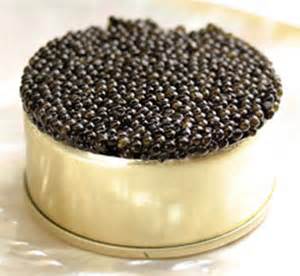ID :
338263
Mon, 08/18/2014 - 12:14
Auther :
Shortlink :
https://oananews.org//node/338263
The shortlink copeid
Cultured Caviar Exports To Reach 1,800kg By Next Mid-March

Tehran, Aug 18, IRNA - Iran exported 1,200 kg of cultured caviar worth $816,000 in 2013, said the secretary-general of Iranian Exporters of Aquatics Association.
In an exclusive interview with the English-language newspaper ˈIran Dailyˈ, Ali Akbar Khodaei added that caviar exports are expected to reach 1,800 kg by March 21, 2015.
“Caspian Sea littoral states have decided to temporarily halt sturgeon fishing. Currently, sturgeon farming is only carried out in the coastal cities of Gilan and Mazandaran provinces,” he said.
He recalled that in the past few years, fish breeding projects have been implemented in the country’s arid and desert areas, including Qom province.
Khodaei said this is due to a sharp decline in the number of sturgeons in the Caspian Sea.
“At present, a large number of countries are willing to buy Iran’s cultured caviar, which is currently mainly exported to European countries,” he said.
The official recalled that in 1990, Iran exported 251 tons of Caspian caviar that have declined to 4 tons in 2010.
In 2010, Food and Agriculture Organization of the United Nations prohibited sturgeon fishing from the Caspian Sea, accusing those who commit the act as criminals and smugglers.
He stressed that in recent years, Iran has done its best to preserve the Caspian sturgeon population.
Iran began sturgeon breeding in 2002 and exported 300 kg of cultured caviar in 2011, which grew by 100 kg in 2012.
The association’s secretary-general said Iran ranks seventh in the world in exporting cultured caviar.
China is the world’s top caviar producer and exporter followed by the US, France, Germany, Hungary and Italy.
Khodaei hoped that in light of increasing caviar exports, Iran will be able to rank among the world’s top three producers in 10 years.
At present, shrimp farming is also carried out in farm ponds in the country’s southern coastal areas.
“Although Iran has reduced shrimp fishing from the sea, it still ranks among the top exporters of the product,” he said.
“Iranians living in the southern coastal areas of the country earn their livelihood mainly through shrimp farming.”
In 1990, 8,000 tons of shrimp were caught from the sea, which declined by more than 6,000 tons in 2013.
Iran produced 12,500 tons of shrimps in 2013, which are expected to reach 16,000 tons by March 2015.
Iran’s shrimp export destinations include Southeast Asian nations such as China, Vietnam and South Korea (60 percent), Persian Gulf littoral states and Middle East countries (20 percent), and European countries like Spain, Italy, France and Britain.





